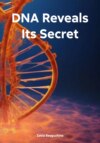Kitabı oku: «DNA Reveals Its Secret», sayfa 4
The distance between the planes in the unwound DNA is 0.705 nm. The base pair planes have the same number of electrons, and the force of action F will be evenly distributed.
Scheme of action of electronic fields in complementary pairs of unfolded DNA.

F1 = F2 = F3 = Fn
The total number of electrons in complementary pairs q.
Thus, we obtain q1 = q2 = q3 = qn.
During methylation, the total number of electrons increases, the methyl group CH3 is added to the cytosine (8 electrons, since the addition of the methyl group to cytosine leads to the loss of "H") – a.
q + a (CH3) – accordingly, the repulsive force increases, which leads to a stronger twisting of the DNA.
The force F, acting between adjacent planes, twists the DNA to reduce the repulsive forces between the planes, thus creating a helical structure for this molecule. The increase in the total number of electrons leads to stronger DNA twisting and stress in the chemical bonds.
An important merit in the study of the stages of demethylation belongs to a group of researchers from the University of North Carolina, headed by Professor Yi Zhang. They discovered intermediate nitrogenous bases of the demethylation process.
Methyl group joining to cytosine and subsequent formation of intermediate nitrogenous bases:
Cytosine → 5-methylcytosine (stage 1) → 5-hydroxymethylcytosine (intermediate product – stage 2) → intermediate product (stage 3) → intermediate product (stage 4) → CYTOZINE
This process leads to further DNA twisting and tension in the bonds.
q1, q'1 (a); we get F'1> F1;
q1, q ”(b); F ”1> F1
Initially, the DNA is twisted as a result of an increase in the repulsive force between the parallel sheets; during demethylation, the DNA unwinds, and the energy required for the replication of the molecule and further biochemical processes is formed.
It is possible that the electro-negativeness of DNA is explained, not only by the negativity of the backbone chain, but also by the action of fields between the parallel planes of the bases. In particular, the hydrophobicity of DNA is explained by the action of electronic fields between the planes.
Let us summarize our conclusions: 1. The total number of electrons in complementary nitrogenous bases, connected by hydrogen bonds, is equal to the RM number – 134.
2. The planes of parallel bases form fields that act on neighboring planes with a force equal to F.
3. The repulsive force between the planes and inertia twist the DNA, transforming it into a spiral structure.
4. The total number of electrons in complementary bases along the entire length of DNA creates a common field, which is a stabilizing factor.
RM number
1. During demethylation and the transition of the final base to cytosine, as a result of tension and inertia, DNA unwinds and the energy required for further DNA replication, as well as subsequent biochemical processes, is generated. It is possible that methylation does not inactivate, but rather activates the gene, since DNA is twisted.
2. The longer the DNA and the more complementary G-C pairs, the more it will unwind and the more energy is generated required for biochemical processes. Therefore, DNA is not only a carrier of hereditary information, but also plays an energetic role in replication. There is no “junk” DNA in it.
DNA methylation
DNA methylation is the addition of a methyl group to a nitrogenous base. In eukaryotes, cytosine methylation is observed. In bacteria, along with cytosine, adenine is also methylated.










